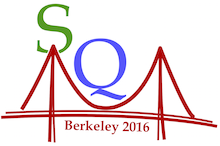Speaker
Santosh Kumar Das
(University of Catania, Italy)
Description
We address the difficulties of the present theoretical approaches to have a
self-consistent description of the experimental data at both RHIC and LHC.
In particular a puzzling relation between the nuclear modification factor
| On behalf of collaboration: | None |
|---|
Author
Santosh Kumar Das
(University of Catania, Italy)
Co-authors
Salvatore Plumari
(University of Catania (Italy))
francesco scardina
(INFN Catania)

